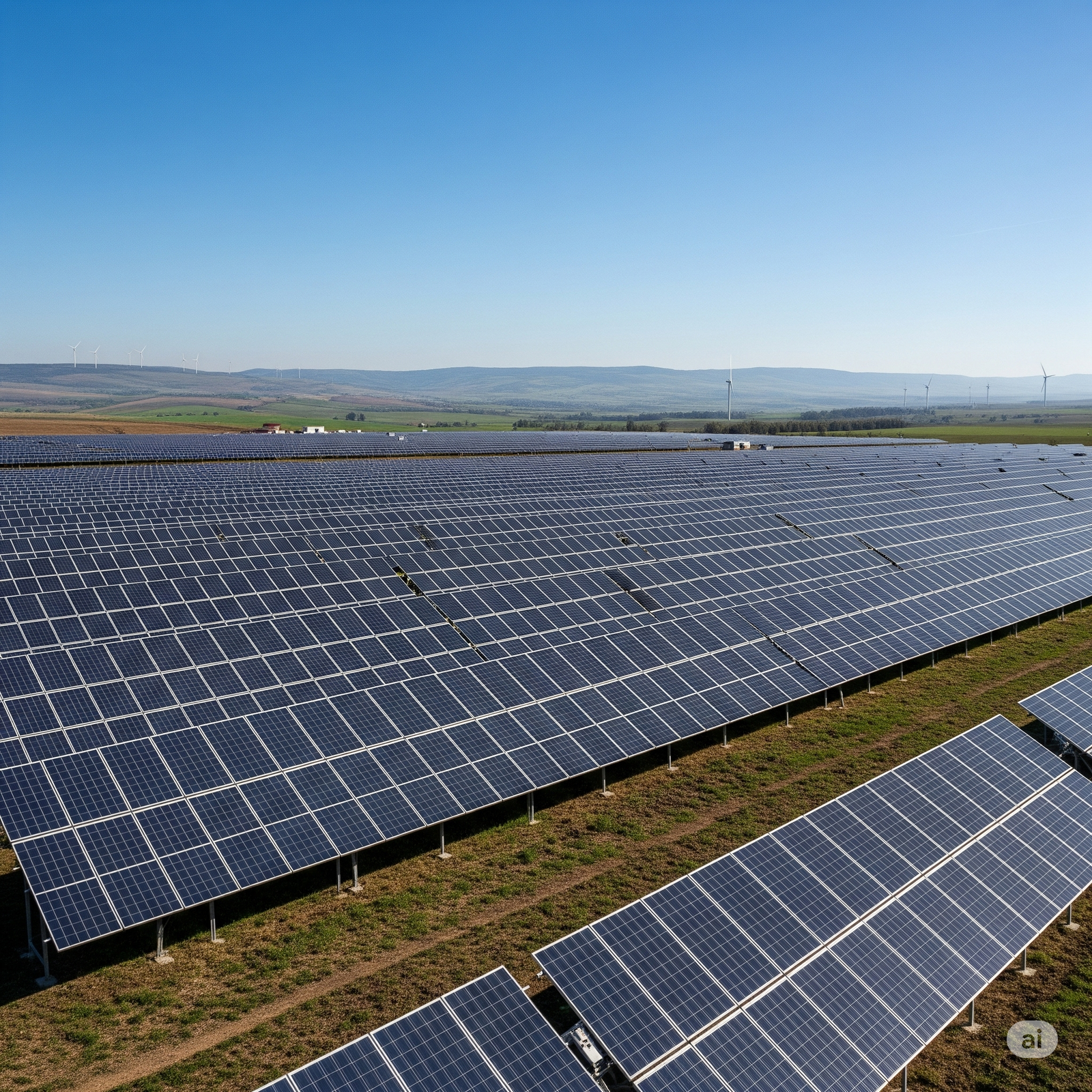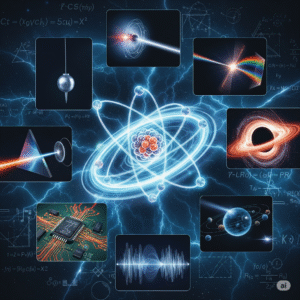Table of Contents
ToggleIntroduction
In today’s world, energy is the foundation of economic growth, technological advancement, and human development. From powering industries and homes to fueling transportation and communication, energy touches every aspect of our lives. However, the sources of energy we have relied on for more than a century—mainly fossil fuels like coal, oil, and natural gas—are finite and environmentally harmful. The consequences of over-reliance on fossil fuels are evident: rising global temperatures, air and water pollution, deforestation, and climate change-related disasters.
As the global population grows and energy demands rise, the need for sustainable and cleaner energy alternatives becomes increasingly urgent. This is where renewable energy comes into focus. Renewable energy refers to energy derived from natural sources that are replenished constantly, such as sunlight, wind, rain, tides, waves, and geothermal heat. Unlike fossil fuels, these resources are practically inexhaustible and have minimal impact on the environment.
This article explores the concept of renewable energy, its various forms, benefits, challenges, and above all, its critical importance in shaping a sustainable future for humanity.
Understanding Renewable Energy
Definition
Renewable energy is energy obtained from natural sources that replenish themselves naturally on a human timescale. Unlike non-renewable energy, which is limited and takes millions of years to form, renewable energy is continuously available and abundant.
Major Types of Renewable Energy
Solar Energy
Solar energy comes from sunlight. Using solar panels and photovoltaic cells, sunlight can be converted into electricity. Solar thermal systems can also capture heat for water heating and industrial processes.
Wind Energy
Wind turbines convert the kinetic energy of moving air into mechanical power or electricity. Wind farms, both onshore and offshore, are increasingly becoming a vital source of renewable electricity.
Hydropower
Hydropower harnesses the energy of flowing or falling water to generate electricity. Large dams, small hydro projects, and even ocean-based energy systems like tidal and wave power fall into this category.
Biomass Energy
Biomass involves using organic material—wood, crop residues, animal waste, and even algae—to produce electricity, heat, or biofuels. It is renewable when managed sustainably.
The Importance of Renewable Energy
Environmental Benefits
One of the most significant reasons renewable energy is important is its minimal impact on the environment compared to fossil fuels. Burning coal, oil, and gas releases greenhouse gases such as carbon dioxide (CO₂) and methane, which trap heat in the atmosphere and cause global warming. Renewable energy sources, on the other hand, produce little to no emissions. By replacing fossil fuels with renewables, we can drastically reduce air pollution, improve public health, and slow down climate change.
Tackling Climate Change
The Intergovernmental Panel on Climate Change (IPCC) warns that urgent action is needed to limit global warming to 1.5°C above pre-industrial levels. Renewable energy is at the heart of this solution. By transitioning to clean energy sources, we can significantly cut down carbon emissions, the leading driver of climate change. A renewable-powered world is not only possible but essential to ensure a habitable planet for future generations.
Energy Security and Independence
Countries that heavily depend on fossil fuel imports are vulnerable to price fluctuations, geopolitical tensions, and supply disruptions. Renewable energy, being locally available in most regions, enhances energy security by reducing reliance on imports. For example, a nation rich in solar or wind resources can meet its energy needs independently, reducing its vulnerability to global oil crises.
Economic Growth and Job Creation
The renewable energy sector is labor-intensive, meaning it creates more jobs per unit of electricity produced compared to fossil fuels. From manufacturing solar panels and wind turbines to installation, maintenance, and research, millions of jobs are generated worldwide. According to the International Renewable Energy Agency (IRENA), the renewable energy sector employed over 12 million people globally in 2022, and this number continues to rise.
Technological Advancement and Innovation
Investments in renewable energy drive innovation. From improved efficiency in solar panels to advanced energy storage solutions and smart grid technologies, the sector is fostering breakthroughs that benefit not only energy but also other fields like transportation and construction.
Rural Development and Energy Access
In many developing countries, remote rural areas lack access to traditional power grids. Renewable energy technologies, especially decentralized systems like solar home kits and mini-grids, provide affordable and reliable electricity. This improves education, healthcare, and economic opportunities for millions of people, contributing to poverty alleviation.
Sustainability for Future Generations
Fossil fuels are finite; they will eventually run out. Renewable energy ensures that future generations have access to abundant energy without compromising the environment. This sustainability aspect makes renewables the cornerstone of long-term energy planning.
Current Global Scenario of Renewable Energy
Globally, renewable energy adoption is accelerating. As of 2023, renewables account for about 30% of global electricity generation, with hydropower, wind, and solar being the largest contributors. Many countries are setting ambitious targets:
The European Union aims for carbon neutrality by 2050.
China, the world’s largest carbon emitter, is investing heavily in solar and wind.
India has committed to achieving 500 GW of renewable energy capacity by 2030.
United States is focusing on clean energy transitions under initiatives like the Inflation Reduction Act.
This rapid expansion indicates that renewables are no longer an alternative but a mainstream solution.
Challenges Facing Renewable Energy
Despite its many advantages, renewable energy still faces obstacles:
High Initial Costs
Although costs are falling, the upfront investment for renewable infrastructure (solar farms, wind turbines, etc.) can be significant, making it challenging for poorer nations.
Land and Resource Use
Large solar farms and wind projects require significant land, which can sometimes conflict with agriculture, wildlife habitats, or communities.
Energy Storage and Grid Integration
Developing large-scale storage systems and upgrading outdated grids to handle renewable inputs is an ongoing challenge.
Policy and Regulatory Barriers
Inconsistent policies, lack of incentives, and subsidies for fossil fuels slow down the renewable transition in many countries.
Solutions and the Way Forward
Investment in Technology
Continued innovation in battery storage, smart grids, and energy efficiency will overcome intermittency and integration challenges.
Government Policies and Incentives
Strong political will, subsidies, and tax benefits can make renewable energy more attractive to investors and consumers.
Public Awareness and Participation
Educating the public about the benefits of renewable energy encourages adoption at the household and community levels.
International Cooperation
Climate change and energy security are global challenges. International partnerships, technology sharing, and funding for developing nations can accelerate global renewable adoption.
Hybrid Systems
Combining renewable sources with existing infrastructure, like solar plus storage or wind plus hydro, ensures a more reliable supply.
Future of Renewable Energy
The future of renewable energy is promising. Trends suggest that solar and wind will dominate global electricity production, supported by rapid advancements in battery storage. Electric vehicles, powered by renewable energy, are expected to revolutionize transportation. Green hydrogen, produced using renewable energy, is emerging as a potential fuel for industries like steel and aviation.
By 2050, experts predict that renewables could supply up to 80% of the world’s electricity, drastically cutting greenhouse gas emissions and paving the way toward a carbon-neutral planet.
Conclusion
Renewable energy is not just an option—it is a necessity. In an era of climate crisis, environmental degradation, and growing energy demands, shifting to renewables is the most practical and sustainable path forward. The importance of renewable energy lies not only in reducing carbon emissions but also in ensuring energy security, fostering economic growth, creating jobs, and improving the quality of life for millions.
Although challenges remain, innovation, political will, and global cooperation can overcome them. A renewable-powered world is within reach, and embracing it is essential for securing a cleaner, greener, and more sustainable future for all.



